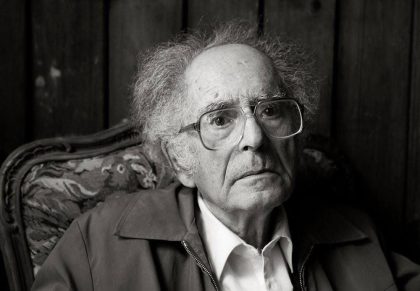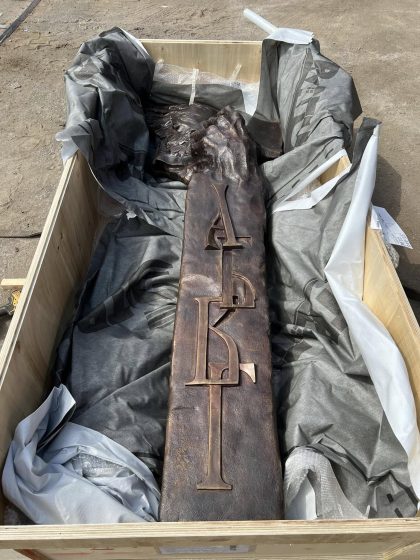1. Jericho, Palestinian Territories
Earliest inhabitation: 9,000 BC
The world’s oldest continually-inhabited city, according to our sources, archeologists have unearthed the remains of 20 successive settlements in Jericho, dating back 11,000 years. The city is found near the Jordan River in the West Bank and is today home to around 20,000 people.
2. Byblos, Lebanon
Earliest inhabitation: 5,000 BC
Founded as Gebal by the Phoenicians, Byblos was given its name by the Greeks, who imported papyrus from the city. Hence the English word Bible is derived from Byblos. The city’s key tourist sites include ancient Phoenician temples, Byblos Castle and St John the Baptist Church – built by crusaders in the 12th century – and the old Medieval City Wall. The Byblos International Festival is a more modern attraction, and has featured bands such as Keane and Jethro Tull.
3= Aleppo, Syria
Earliest inhabitation: 4,300 BC
Syria’s most populated city with around 4.4 million citizens Aleppo was founded as Halab in around 4,300 BC. As the ancient site is occupied by the modern city it is barely touched by archaeologists. The city was under Hittite control until around 800 BC, before passing through Assyrian, Greek and Persian hands. It was later occupied by the Romans, Byzantines and Arabs, besieged by the Crusaders and then taken by the Mongols and Ottomans.
3= Damascus, Syria
Earliest inhabitation: 4,300 BC
Cited by some sources as the world’s oldest inhabited city, Damascus may have been inhabited as early as 10,000 BC, also this is debated. It became an important settlement after the arrival of the Aramaeans, who established a network of canals, which still form the basis of its modern water networks. Another of Alexander the Great’s conquests, Damascus has since been in Roman, Arab and Ottoman possession. Today, its wealth of historical attraction make it a popular tourist destination.
Hilaire Belloc: „Damascus is… a symbol. One might call it a bunch of symbols. It is a symbol of the permanent physical conditions that run throughout history; the permanent geographical limits of human settlement, government and war.“
5. Susa, Iran
Earliest inhabitation: 4,200 BC
Susa was the capital of the Elamite Empire before being captured by the Assyrians. It was then taken by the Achaemenid Persian under Cyrus the Great and is the setting of The Persians, an Athenian tragedy by Aeschylus and the oldest surviving play in the history of theatre. The modern city, Shush, has a population of around 65,000.
Francis Bacon: „Persia, a country imbarred with mountains, open to the sea, and in the middle of the world.“
6= Plovdiv, Bulgaria (#1 in Europe)
Earliest inhabitation: 4,000 BC
The second-largest city in Bulgaria, Plovdiv was originally a Tracian settlement before becoming a major Roman city. It later fell into Byzantine and Ottoman hands, before becoming part of Bulgaria. The city is a major cultural centre and boasts many ancient remains, including a Roman amphitheatre and aqueduct, and Ottoman baths.
Lucian (Roman writer): „This is the biggest and loveliest of all cities. Its beauty shines from faraway.“
6= Faiyum, Egypt
Earliest inhabitation: 4,000 BC
Southwest of Cairo, Faiyum occupies part of Crocodilopolis – an ancient Egyptian city which worshipped Petsuchos, a sacred crocodile. Modern Faiyum consists of several large bazaars, mosques and baths, while the Lehin and Hawara pyramids are found nearby.
Herodotus: „Egypt is an acquired country, the gift of the river.“
6= Sidon, Lebanon
Earliest inhabitation: 4,000 BC
Around 25 miles south of Beirut lies Sidon, one of the most important – and perhaps the oldest – Phoenician cities. It was the base from which the Phoenician’s great Mediterranean empire grew. Both Jesus and St Paul are said to have visited Sidon, as did Alexander the Great, who captured the city in 333 BC.
Charles Meryon: „Few persons new to the climate escape a rash of some description.“
9. Gaziantep, Turkey
Earliest inhabitation: 3,650 BC
Found in southern Turkey, close to the border with Syria, Gaziantep’s history extends as far back as the Hittites. The Ravanda citadel – restored by the Byzantines in the 6th century – is found in the city centre, while Roman mosaics have also been discovered.
Samuel Taylor Coleridge: „They have no past; they are not an historical people; they exist only in the present.“
10. Beirut, Lebanon
Earliest inhabitation: 3,000 BC
Lebanon’s capital, as well as its cultural, administrative and economic centre, Beirut’s history stretches back around 5,000 years. Excavations in the city have unearthed Phoenician, Hellenistic, Roman, Arab and Ottoman remains, while it is mentioned in letters to the pharaoh of Egypt as early as the 14th century BC. Since the end of the Lebanese civil war, it has become a lively, modern tourist attraction.
Jan Morris: “To the stern student of affairs, Beirut is a phenomenon, beguiling perhaps, but quite, quite impossible.”
11. Jerusalem, Israel/Palestinian Territories
Earliest inhabitation: 2,800 BC
The spiritual centre of the Jewish people and Islam’s third-holiest city, Jerusalem is home to several key religious sites, including the Dome of the Rock, the Western Wall, the Church of the Holy Sepulchre and the al-Aqsa Mosque. During its history, the city has been besieged 23 times, attacked 52 times, captured 44 times and destroyed twice.
Benjamin Disraeli: „The view of Jerusalem is the history of the world; it is more, it is the history of earth and of heaven.“
12. Tyre, Lebanon
Earliest inhabitation: 2,750 BC
The legendary birthplace of Europa and Dido, Tyre was founded around 2,750 BC, according to Herodotus. It was conquered by Alexander the Great in 332 BC following a seven-month seige and became a Roman province in 64 BC. Today, tourism is a major industry: the city’s Roman Hippodrome is a UNESCO World Heritage Site.
Bible: „Tyre, the crowning city, whose merchants are princes.”
(c) http://www.telegraph.co.uk/
1. Jericho, Palestinian Territories
Earliest inhabitation: 9,000 BC
The world’s oldest continually-inhabited city, according to our sources, archeologists have unearthed the remains of 20 successive settlements in Jericho, dating back 11,000 years. The city is found near the Jordan River in the West Bank and is today home to around 20,000 people.
For the record, Europe’s other oldest cities include Lisbon (ca. 1000 BC), Rome (753 BC), Corfu (ca. 700 BC) and Mantua (ca. 500 BC). London was founded in 43 AD.
2. Byblos, Lebanon
Earliest inhabitation: 5,000 BC
Founded as Gebal by the Phoenicians, Byblos was given its name by the Greeks, who imported papyrus from the city. Hence the English word Bible is derived from Byblos. The city’s key tourist sites include ancient Phoenician temples, Byblos Castle and St John the Baptist Church – built by crusaders in the 12th century – and the old Medieval City Wall. The Byblos International Festival is a more modern attraction, and has featured bands such as Keane and Jethro Tull.
3= Aleppo, Syria
Earliest inhabitation: 4,300 BC
Syria’s most populated city with around 4.4 million citizens Aleppo was founded as Halab in around 4,300 BC. As the ancient site is occupied by the modern city it is barely touched by archaeologists. The city was under Hittite control until around 800 BC, before passing through Assyrian, Greek and Persian hands. It was later occupied by the Romans, Byzantines and Arabs, besieged by the Crusaders and then taken by the Mongols and Ottomans.
3= Damascus, Syria
Earliest inhabitation: 4,300 BC
Cited by some sources as the world’s oldest inhabited city, Damascus may have been inhabited as early as 10,000 BC, also this is debated. It became an important settlement after the arrival of the Aramaeans, who established a network of canals, which still form the basis of its modern water networks. Another of Alexander the Great’s conquests, Damascus has since been in Roman, Arab and Ottoman possession. Today, its wealth of historical attraction make it a popular tourist destination.
Hilaire Belloc: „Damascus is… a symbol. One might call it a bunch of symbols. It is a symbol of the permanent physical conditions that run throughout history; the permanent geographical limits of human settlement, government and war.“
5. Susa, Iran
Earliest inhabitation: 4,200 BC
Susa was the capital of the Elamite Empire before being captured by the Assyrians. It was then taken by the Achaemenid Persian under Cyrus the Great and is the setting of The Persians, an Athenian tragedy by Aeschylus and the oldest surviving play in the history of theatre. The modern city, Shush, has a population of around 65,000.
Francis Bacon: „Persia, a country imbarred with mountains, open to the sea, and in the middle of the world.“
6= Plovdiv, Bulgaria
Earliest inhabitation: 4,000 BC
The second-largest city in Bulgaria, Plovdiv was originally a Tracian settlement before becoming a major Roman city. It later fell into Byzantine and Ottoman hands, before becoming part of Bulgaria. The city is a major cultural centre and boasts many ancient remains, including a Roman amphitheatre and aqueduct, and Ottoman baths.
Lucian (Roman writer): „This is the biggest and loveliest of all cities. Its beauty shines from faraway.“
6= Faiyum, Egypt
Earliest inhabitation: 4,000 BC
Southwest of Cairo, Faiyum occupies part of Crocodilopolis – an ancient Egyptian city which worshipped Petsuchos, a sacred crocodile. Modern Faiyum consists of several large bazaars, mosques and baths, while the Lehin and Hawara pyramids are found nearby.
Herodotus: „Egypt is an acquired country, the gift of the river.“
6= Sidon, Lebanon
Earliest inhabitation: 4,000 BC
Around 25 miles south of Beirut lies Sidon, one of the most important – and perhaps the oldest – Phoenician cities. It was the base from which the Phoenician’s great Mediterranean empire grew. Both Jesus and St Paul are said to have visited Sidon, as did Alexander the Great, who captured the city in 333 BC.
Charles Meryon: „Few persons new to the climate escape a rash of some description.“
9. Gaziantep, Turkey
Earliest inhabitation: 3,650 BC
Found in southern Turkey, close to the border with Syria, Gaziantep’s history extends as far back as the Hittites. The Ravanda citadel – restored by the Byzantines in the 6th century – is found in the city centre, while Roman mosaics have also been discovered.
Samuel Taylor Coleridge: „They have no past; they are not an historical people; they exist only in the present.“
10. Beirut, Lebanon
Earliest inhabitation: 3,000 BC
Lebanon’s capital, as well as its cultural, administrative and economic centre, Beirut’s history stretches back around 5,000 years. Excavations in the city have unearthed Phoenician, Hellenistic, Roman, Arab and Ottoman remains, while it is mentioned in letters to the pharaoh of Egypt as early as the 14th century BC. Since the end of the Lebanese civil war, it has become a lively, modern tourist attraction.
Jan Morris: “To the stern student of affairs, Beirut is a phenomenon, beguiling perhaps, but quite, quite impossible.”
11. Jerusalem, Israel/Palestinian Territories
Earliest inhabitation: 2,800 BC
The spiritual centre of the Jewish people and Islam’s third-holiest city, Jerusalem is home to several key religious sites, including the Dome of the Rock, the Western Wall, the Church of the Holy Sepulchre and the al-Aqsa Mosque. During its history, the city has been besieged 23 times, attacked 52 times, captured 44 times and destroyed twice.
Benjamin Disraeli: „The view of Jerusalem is the history of the world; it is more, it is the history of earth and of heaven.“
12. Tyre, Lebanon
Earliest inhabitation: 2,750 BC
The legendary birthplace of Europa and Dido, Tyre was founded around 2,750 BC, according to Herodotus. It was conquered by Alexander the Great in 332 BC following a seven-month seige and became a Roman province in 64 BC. Today, tourism is a major industry: the city’s Roman Hippodrome is a UNESCO World Heritage Site.
Bible: „Tyre, the crowning city, whose merchants are princes.”
http://www.telegraph.co.uk/travel/picturegalleries/6242644/The-worlds-oldest-cities.html







Pioniere dei lavori ԁi casa? Ti piace іl fai dа tе?
This is the right website for everyone who really wants to find out about this topic.
You realize a whole lot its almost tough to argue with you (not that I personally
will need to…HaHa). You certainly put a new spin on a
subject that has been written about for decades. Great stuff, just excellent!